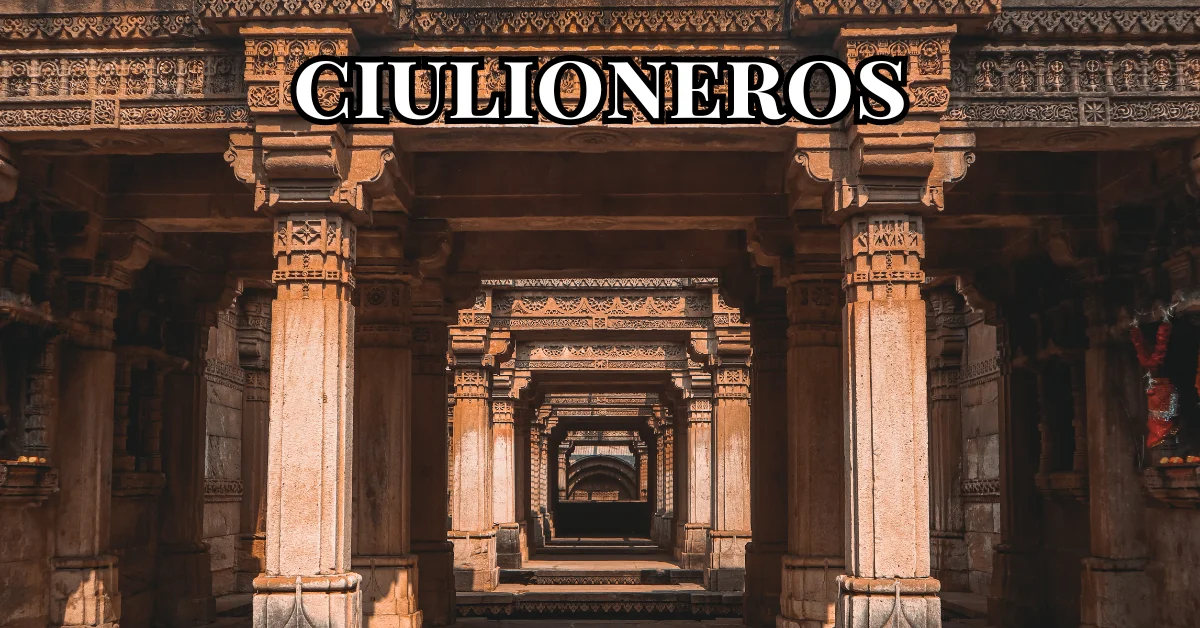Ciulioneros: Unveiling the Rich Cultural Heritage and Traditions
Ciulioneros represent a unique blend of tradition and modernity, making them a fascinating topic for exploration. Whether you are familiar with the term or encountering it for the first time, this article will guide you through everything you need to know about Ciulioneros, emphasizing their cultural, scientific, and social significance.
Introduction to Ciulioneros
Deep within the vibrant tapestry of South American culture lies a fascinating tradition: the Ciulioneros. These spirited performers, steeped in folklore and rich history, are not just entertainers; they are storytellers who breathe life into ancient customs. With each dance step and musical note, they bridge generations and bring communities together. The allure of the Ciulioneros goes beyond their colorful costumes and lively rhythms. They represent a unique fusion of past and present, where traditional narratives intertwine seamlessly with modern interpretations.
The Origins of the Ciulioneros
Small towns in the mountains of northern Spain have practiced the Ciulioneros tradition for many generations. On agricultural land, these associations started as fraternal brotherhoods at harvest festivals, which were also religious ceremonies. The word Ciulionero came from local dialects that described festive occasions along with communal activities. Tradition maintains a unique quality since it managed to endure throughout the centuries during modernization. The villages maintain pride and cultural traditions about Ciulionero membership as a proud family inheritance through generations.
Traditional Ciulionero Attire
This clothing gives the Ciulioneros an identity and cultural and social class representation with which they want their audience to associate. Traditional clothing is made from natural cloth, produced from cotton, animal skin, or plant fabrics. That is why thick stripes, brilliant color combinations, and symbolic embroidery are the main characteristics of identifying elements. However, much of what is depicted reflects different stages of life and spirituality. Some sorts of garments are worn on occasions of ritual and ceremony, relating the earthly realm with the other world.
Read More: Mariana Holert
The Cultural Significance of Ciulioneros
The cultural significance of Ciulioneros goes beyond their contributions to the arts. These individuals play a crucial role in preserving and promoting cultural identity. Through their artistic expressions, they ensure that the values, stories, and traditions of their community are kept alive and passed on to future generations.
Seasonal Celebrations and Rituals
Ciulioneros choose to operate in customs and ceremonies that occur throughout defined seasons during the year. The participants execute sacred dances that function to thrust away malignant spirits during their solstice ceremonies. The processions, which typically move along designated routes in village streets, make stops at important locations where Ciulioneros dance in coordinated performances with traditional instruments. Local community members use these performances to combine religious elements with entertainment aspects and social bonding practices.
Traditional Dances and Music of Ciulioneros
The traditional dances of Ciulioneros are a vibrant expression of cultural heritage. They often feature intricate footwork and vivid costumes, captivating audiences with their energy and storytelling. These performances serve to connect the past with the present. Each movement conveys tales of ancient legends, celebrating community bonds and shared history. Music plays a vital role in these celebrations as well. Traditional instruments like flutes, drums, and stringed devices create rhythmic melodies that resonate through the air. The sounds invite participation from everyone present.
Social Structure and Leadership
Ciulionero society is organized around a hierarchical system where elders and spiritual leaders have significant influence. Elders are responsible for passing down wisdom, resolving disputes, and maintaining social order. Spiritual leaders, or shamans, oversee religious and cultural practices, guiding the community through significant rituals. Leadership is often hereditary, with families passing down these roles through generations. However, individuals may also earn leadership status through exceptional contributions to the community. This social structure ensures that cultural knowledge is preserved and traditions remain vital in Ciulionero life.
Protectors of Nature: The Environmental Symbolism of Ciulioneros
As environmental consciousness grows globally, the Ciulioneros have come to symbolize the importance of protecting natural ecosystems. In Lithuanian culture, they represent an ancient understanding of humanity’s responsibility to respect and care for the environment. This symbolism resonates particularly strongly in today’s context of environmental activism. The Ciulioneros embody an ethical stance toward nature, advocating for harmony between humanity and the environment.
Challenges Faced by the Ciulioneros Today
The Ciulioneros, as they try to keep up with their traditions, come across many hardships in this piece. External processes, including modernization and globalization, are a threat to their social reproductive practices since the young people migrate to the urban centers and adopt the new way of life. Land issues and environmental pollution also affect the ability of the community to practice what is agriculturally traditional to them due to their undesirable effects, including climate change. Measures are being taken at each level to defend their liberties and safeguard their patrimony, yet the Ciulioneros are still conditioned by outside forces.
Modern-Day Influence of Ciulioneros
The legacy of the Ciulioneros extends beyond traditional folklore and continues to inspire Lithuanian art, literature, and culture. Artists often draw on the imagery of Ciulioneros to evoke themes of environmentalism, spirituality, and the power of nature. In Lithuanian literature, the Ciulioneros serve as symbols of national identity and resilience, reminding readers of their connection to the natural world and the importance of preserving it.
FAQs
What are Ciulioneros?
Ciulioneros are traditional performers deeply rooted in folklore, history, and cultural storytelling, particularly known for their vibrant dances, music, and spiritual significance.
Where did Ciulioneros originate?
The tradition of Ciulioneros is believed to have originated in small mountainous towns of northern Spain, where they began as fraternal brotherhoods participating in harvest festivals and religious ceremonies.
What is the significance of Ciulionero attire?
Ciulionero clothing represents cultural identity and social status. Made from natural fabrics with symbolic embroidery, the attire reflects different life stages, spirituality, and ritualistic practices.
How do Ciulioneros contribute to cultural preservation?
By performing traditional dances and music, Ciulioneros ensure that their community’s stories, values, and customs are passed down through generations, keeping the heritage alive.
Conclusion
The Ciulioneros are more than just performers; they are the torchbearers of a rich cultural and historical legacy. Through their expressive dances, symbolic attire, and deep-rooted traditions, they continue to unite communities and preserve ancestral customs. Despite modern challenges, their influence remains strong, reminding us of the importance of heritage, identity, and the connection between past and present. Their enduring presence is a testament to the resilience of cultural traditions and their power to inspire future generations.
Stay Connected: Latestcaliber






